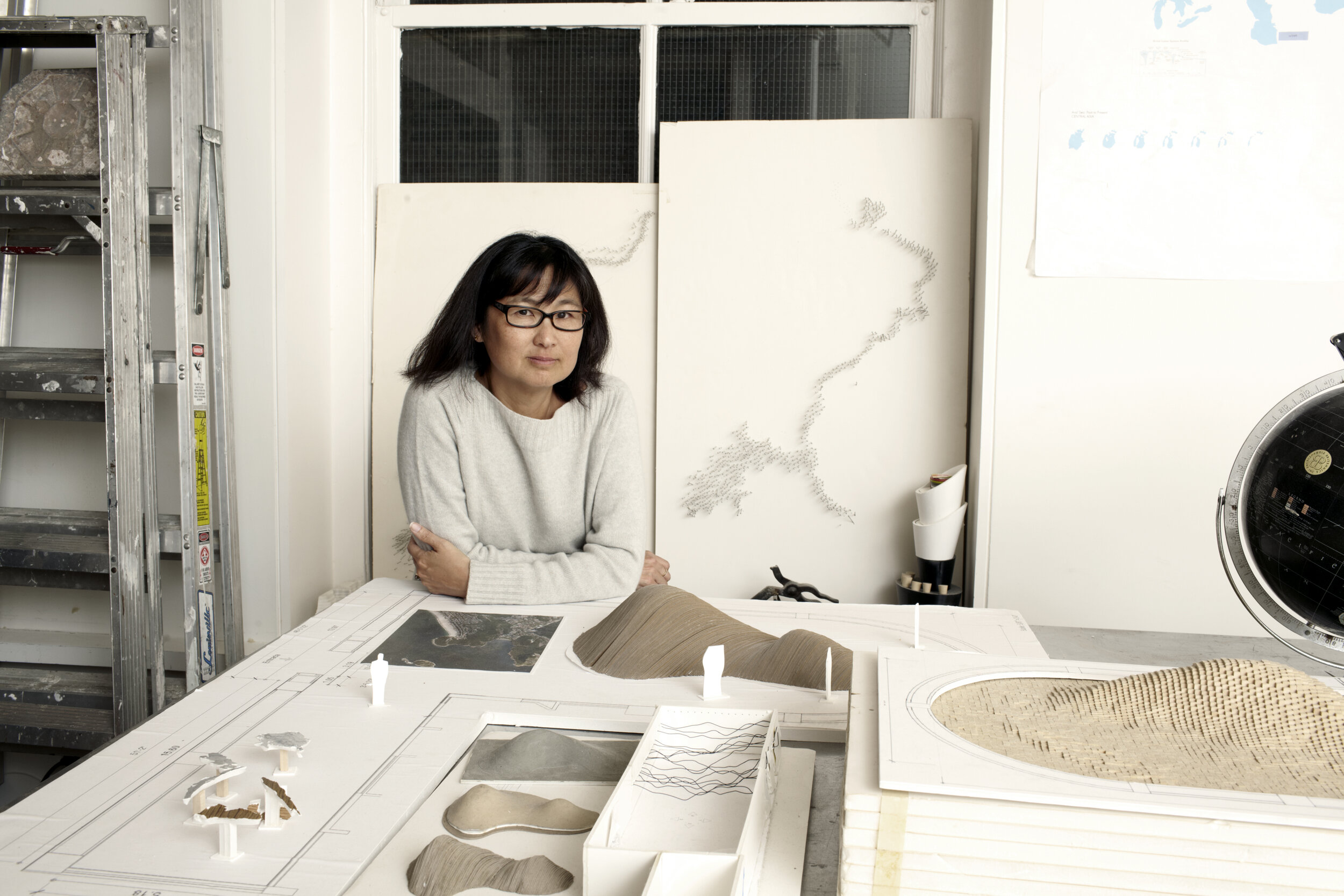Photograph by Jesse Frohman
Maya Lin (American, b. 1959)
Maya Lin is known for her large-scale environmental artworks, her architectural works and her memorial designs. Her unique multi-disciplinary career has “resisted categories, boundaries and borders” (Michael Brenson). In her book Boundaries, she writes I see myself existing between boundaries, a place where opposites meet; science and art, art and architecture, East and West. My work originates from a simple desire to make people aware of their surroundings.”
Nature and the environment have long been central concerns for Lin who attended Yale University where she earned a BA in 1981 and a Master of Architecture degree in 1986. Lin was thrust into the spotlight when, as a senior at Yale, she submitted the winning design in a national competition for the Vietnam Veterans Memorial to be built in Washington, D.C. She has gone on to a remarkable career in both art and architecture, whilst still being committed to memory works that focus on some of the critical historical issues of our time.
Lin’s art explores how we experience and relate to landscape, setting up a systematic ordering of the land that is tied to history, memory, time, and language. Her interest in landscape has led to works influenced by topographies and geographic phenomena.
Her artwork has been featured in numerous solo exhibitions at museums and galleries worldwide, with works in the permanent collections of the National Gallery of Art; The Metropolitan Museum of Art; The Museum of Modern Art; The Smithsonian Institution; The Nelson-Atkins Museum of Art; and the California Academy of Sciences, among others. She is represented by the Pace Gallery in New York.
Her architectural projects, largely undertaken at the request of non-profit institutions include the newly renovated Neilson Library (2021) at Smith College, the Novartis Institutes for Biomedical Research, Cambridge Campus (2015) in Massachusetts, the Museum for Chinese in America (2009) in New York City and the Riggio-Lynch Interfaith Chapel (2004) and Langston Hughes Library (1999) in Clinton, Tennessee. Her designs create a close dialogue between the landscape and built environment, oftentimes juxtapose old and new construction, strive to be harmonious within their site- whether it be an urban or rural setting and she is committed to advocating sustainable design solutions in all her works.
In 2009, Maya Lin started work on her last memorial, What is Missing?, an on-going, multi-sited multimedia installation that raises awareness about habitat loss and biodiversity loss, emphasizing how protecting and restoring habitats can help protect species and significantly reduce climate change emissions.
A member of the American Academy of Arts and Letters and the American Academy of Arts and Sciences, Lin has been profiled in TIME, The New York Times Magazine and The New Yorker, among many other media outlets. The 1996 documentary about her, Maya Lin: A Strong Clear Vision, won the Academy Award for Best Documentary. In 2009, she was awarded the National Medal of Arts, the nation’s highest honor for artistic excellence. In 2016, President Barack Obama awarded Lin the nation’s highest civilian honor, the Presidential Medal of Freedom, praising her for a celebrated career in both art and architecture, and for creating a sacred place of healing in our nation’s capital.
Born in Athens, Ohio in 1959, Lin holds degrees from Yale and the Yale School of Architecture. She lives and works in New York City.
